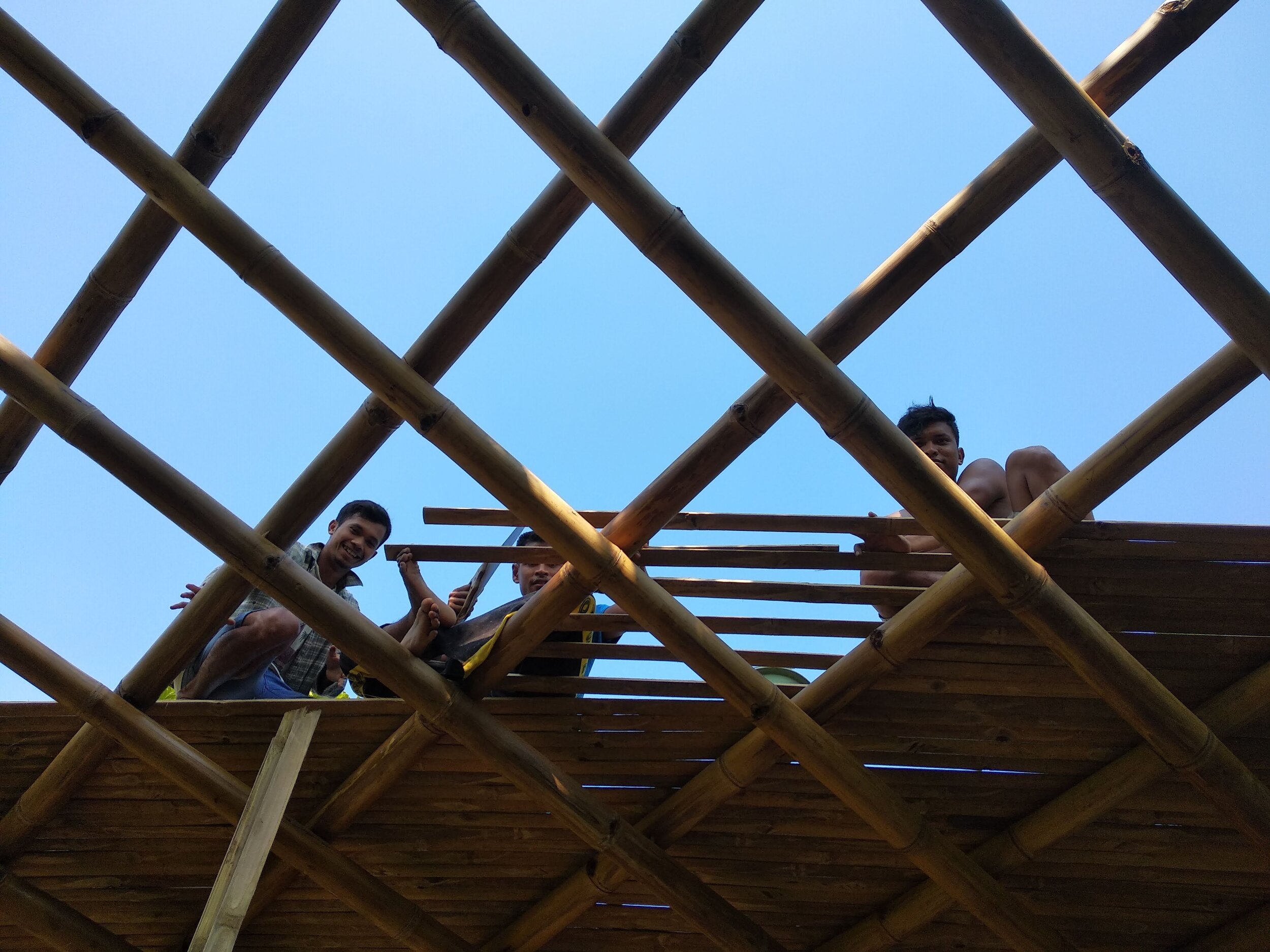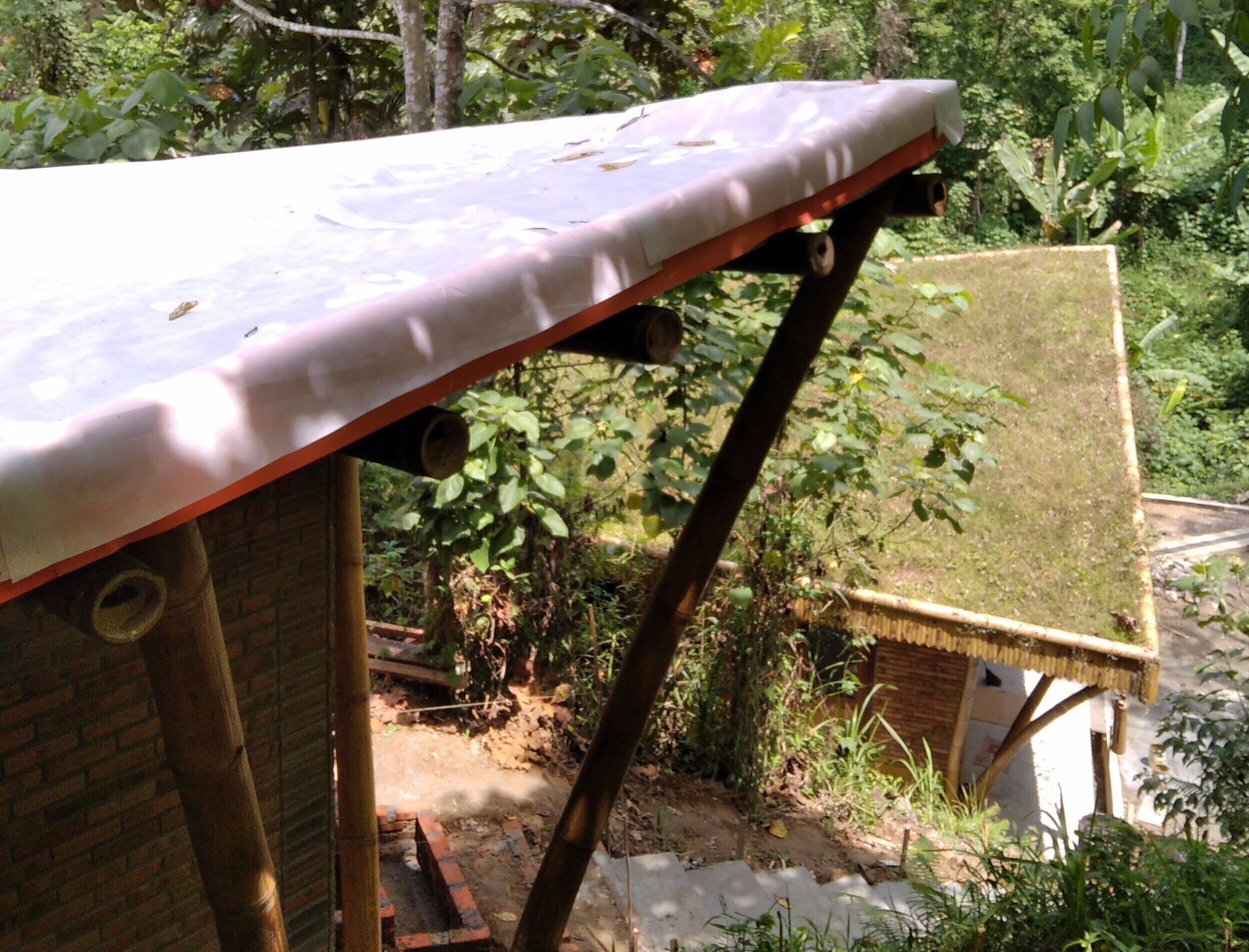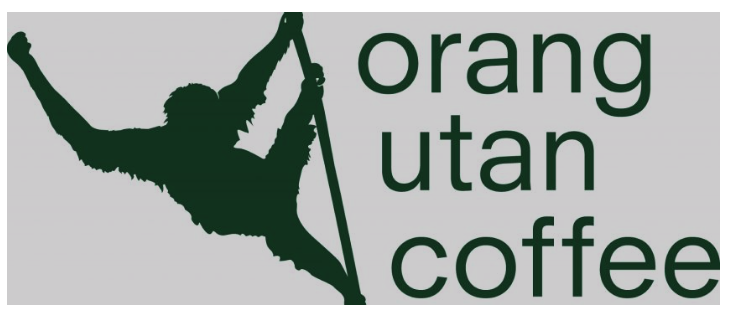Bamboo Green Roofs - Orangutan Haven
I was invited by Gilbert Murrer and Pak Suherry to the Orangutan Haven (OUH) in North Sumatra last year to work on a design project with them. That visit opened up many vistas for me giving insight to what this organisation has achieved and is still achieving in terms of bamboo and other sustainable building works on their sites. All this while maintaining their core function of nurturing and protecting orang-utans that have been displaced by the massive land clearing and cultivation.
Photo source: OUH website
There is much to find out about the organisation, their purpose, challenges and successes and this you can follow and I hope support via the links provided below. I also had the pleasure of meeting their Director, Dr. Ian Singleton, who was recently awarded the OBE for his work with orang-utans. Congratulations , Ian!
Dr.Ian Singleton
What I observed with OUH is the passion and persistence that has been poured into the projects not just directly with the orang-utans but also more relevant on this platform is the prototyping work in bamboo and sustainable materials.
Please read on for what Gilbert Murrer, an architect with OUH has to say about their buidings and journey with bamboo.
Photo source: OUH website
1. Tell us about OUH as an organisation in general, its aims and activities.
The Orangutan Haven (OUH) in Medan, Sumatra, Indonesia is a unique conservation and education resource. We believe the OUH is the first project of its kind in the world, as it promotes nature conservation and sustainable development in a unique and highly innovative fashion.
Light grey area shows the OUH site at 44 hectares.
Whilst initially focused on the orangutans themselves, what is today known as the OUH has grown markedly in both size and scope. The lush wetland valley currently being developed into the orangutan islands covers more than 48 ha, most of it traditional mixed-agroforestry land.
A fantastic opportunity therefore exists to develop the whole site as a unique, comprehensive education resource for the entire region of Northern Sumatra, promoting species and ecosystem conservation, animal welfare and sustainable development.
Bamboo being delivered to OUH
Drying and seasoning bamboo on site.
2. How did bamboo come into the picture at OUH and of course we really are interested in how the green bamboo roof started? How many buildings are there now with these roofs?
In 2014 we started exploring the potential of bamboo, kickstarting with Suherry Aprianto, OUH project leader, immersing in courses and self study. With this knowledge he then introduced a resilient growth and harvest bamboo method to the local community - where we are working with the local people to ensure that only mature stalks are harvested, and that cutting is only done during a waning moon, which aids in reducing populations of boring insects that might otherwise degrade the organic structure of exposed shoots.
2014 also marked the year a bamboo workshop in Bukit Lawang was set up out with the expertise of our close friend Jorg Stamm (refer to our earlier post on Jorg and also the buildings he and Lukas Zollinger has designed and built for OUH). This facility, being the first in whole Sumatra, is equipped with heavy machinery and a treatment pool, which allows a bamboo production at its fullest.
Photo source: OUH website
Once the bamboo production workshop was up and running, it provided for the construction of the bamboo restaurant ‘Kapal Bambu’ in 2015 in Bukit Lawang, a pioneering project for the island of Sumatra, almost entirely using bamboo.
Some of the smaller scale green structures in OUH incorporating various roof ing methods and materials.
Some larger green structures in the OUH
Then in 2016 the successful concept was duplicated at OUH, Pancur Batu. There, the green roof came into play when experimenting on hyperparaboloid roof shapes with Jorg Stamm in 2017, while simultaneously working on the iconic 30m bamboo bridge at OUH. With Jorg’s structural expertise, him basically mentioning it could hold a green roof, the ignition of thought started and we went on to first use simple tarpaulin with farn roots as a medium for growth on a prototype structure.
With the planning of new structures we allowed ourselves more time to study the subject and found a supplier of geomembranes nearby. From there on it was only a question of time until by now we have 3 roofs covered in green lush grass and 2 roofs covered with an exposed geomembrane, allowing us to mount photovoltaic panels on to it.
Bamboo grid structure with bamboo splits/plywood laid on top as roof base.
, Sarnafil membrane laid over bamboo structure/plywood (see detail drawing below)
Soil and turf laid over geotextile, drainage cell then sarnafill.
Bamboo fascia edge built as upstand.
Top view of completed green roof.
Detail drawing of green roof.
3. I notice that you have used a variety of roofs in your buildings - how complex or expensive are these roofs in relation to the other roofs?
From sago palm leaf roofs to bamboo shingles, bangli method, we have started off constructing many types of eco-friendly methods with the aim of showcasing the possibility of local produce.
Starting off with roof thatching methods of just 14 USD per square meter, we need to keep in mind the durability and the maintenance that comes with it. Advantage in simple thatching comes with easy accessibility of manpower and quick repair if needed. Though comparing with a green roof where we look into a non-local produce, by name the geomembrane and drain cells, a squaremeter price almost four times higher comes with a carbon neutral footprint and about zero upkeep, accepting wild growth on the roof. Indeed the Orangutan Haven lies in a vast land of secondary forest and endemic grasses and shrubs are welcomed to grow over a first layer of planted cover grass.
Palm thatch roofing being installed at OUH
Bangli method on the left and bamboo splits on the right being trialled.
Bangli roofing installation on the OUH Bridge.
4. Can you share about the type of bamboos you use and the production process of bamboo used in OUH before it is sent for construction.
Currently we are harvesting 3 types of different bamboos that are specially used for the construction of buildings, apart of other bamboos we utilize ie. for furniture and drinking straws.
By local names we go with bambu siam (Bambusa vulgaris), a small growth grass with thick walls. bambu belangke (Gigantochloa parviflora), a middle growth grass comparable with bambu tali (Gigantochloa apus) and last but not least the king of the south-east asian bamboos, bambu petung (Dendrocalamus asper).
5. Tell us about the community and the artisans, and any special skills required to make your products?
Starting from zero in a community where corn and palm oil harvest are locally prioritised we have found a big interest in people engaging with their ancestor skills of craftsmanship in bamboo. By now we are happy to announce that two of our trained staff became fully skilled bamboo carpentry craftsmen, two young man in their end 20’s with a huge potential to learn and even thrive more until the point were as well their apprentices can be promoted. For the program of craftsmanship they engage with the whole production and construction process, which gives our craftsman a full immersion in bamboo.
6. What are the main challenges in bamboo building and how is OUH approaching these challenges?
From our workers perspective, building with bamboo requires a good strategy since we deal with natural elements like weather conditions such as sunlight and rain. Both to a certain extent challenge the work on site to be finished in time - climbing up a hot or wet bamboo pole several meters up high can be fatal if not respected enough.
Apart from this bamboo is still a new market in North Sumatra where we are based, and therefore competent local manpower is difficult to source and keep..
Completed bamboo green roof at OUH
7. As an architect involved in bamboo, what is your favourite all time bamboo building and why?
Sharma Springs residence in Green Village, Bali. The soul of the building felt when I entered was extraordinary to my personal experience, creating memories and flashbacks of my time in natural surrounding such as jungle and rivers. I think on all its 6 floors this building is showcasing an interesting diverse life. I am paying big respect to all people involved in such a creation.
The OUH team
8. What makes OUH different and unique? Tell why you joined and how it has inspired you to stay on and commit your work there.
I personally think the approach and a mix of its main pillars such as education, conservation, green technology, sustainable development and animal welfare makes the OUH a unique ambitious project with a lot of benefits for the whole of mother earth. Myself giving a lot into making it happen, at the same time getting a lot of knowledge out of it, improving in various fields that are to be developed on site. An open minded workplace indeed.
OUH Architect Gilbert Murrer
9. What would be your advice to those who are starting their bamboo journey enthusiastic and wanting to get involved?
Stay strong and carry on, whatever comes into your way. A splinter and some cuts here and there some blood when working hands-on are the norm. Working and feeling bamboo are essential in my opinion to not only understand the properties but also the immense possibilities.
This natural, fast growing material in all its shapes needs a mind that is bendable and able to think outside given schooling of boxes and rectangles. If you are a nature lover, peacemaker and constantly evaluating methods and techniques, you are already involved.
Links: The Orangutan Haven (OUH) in Medan, Sumatra, Indonesia


































